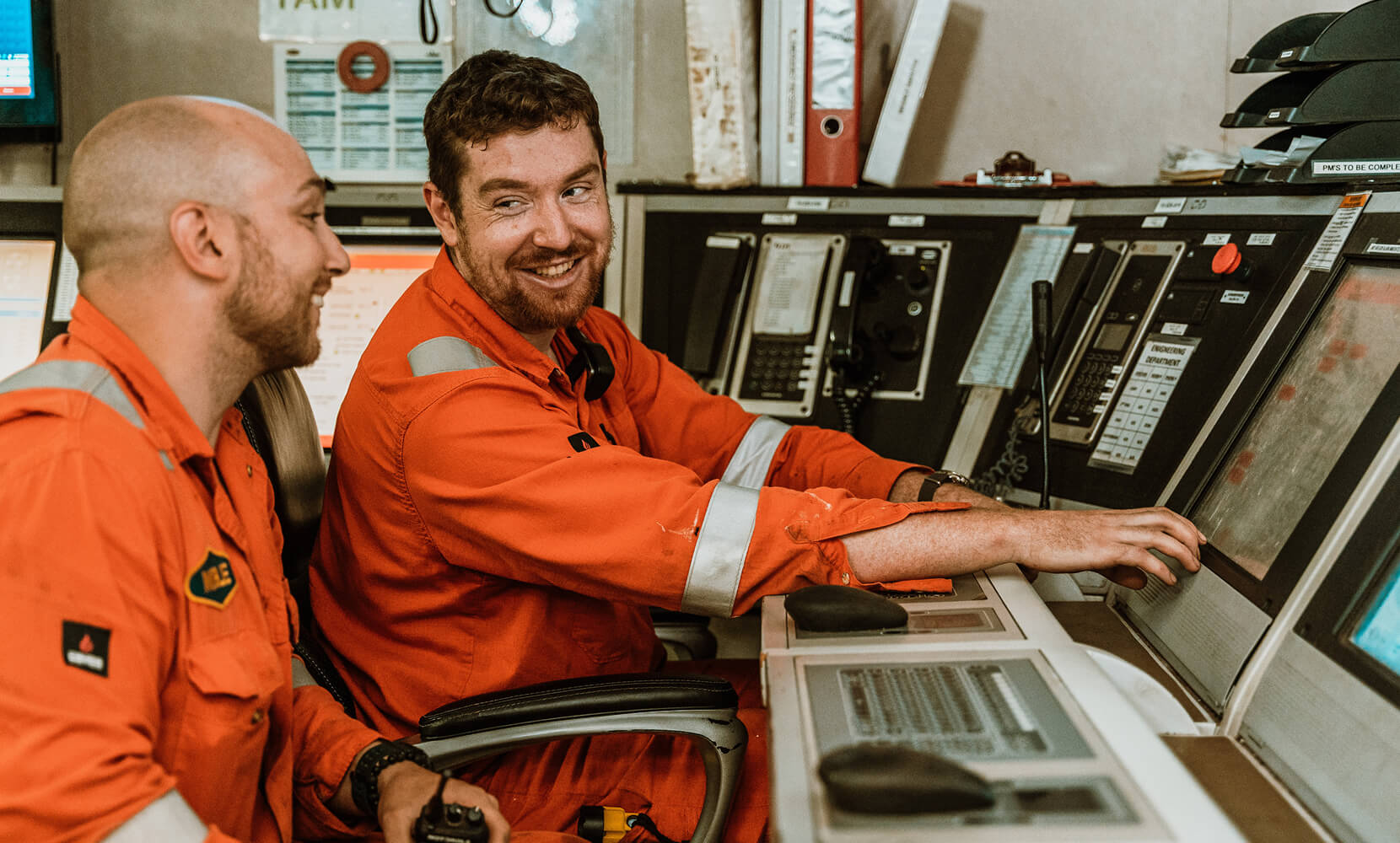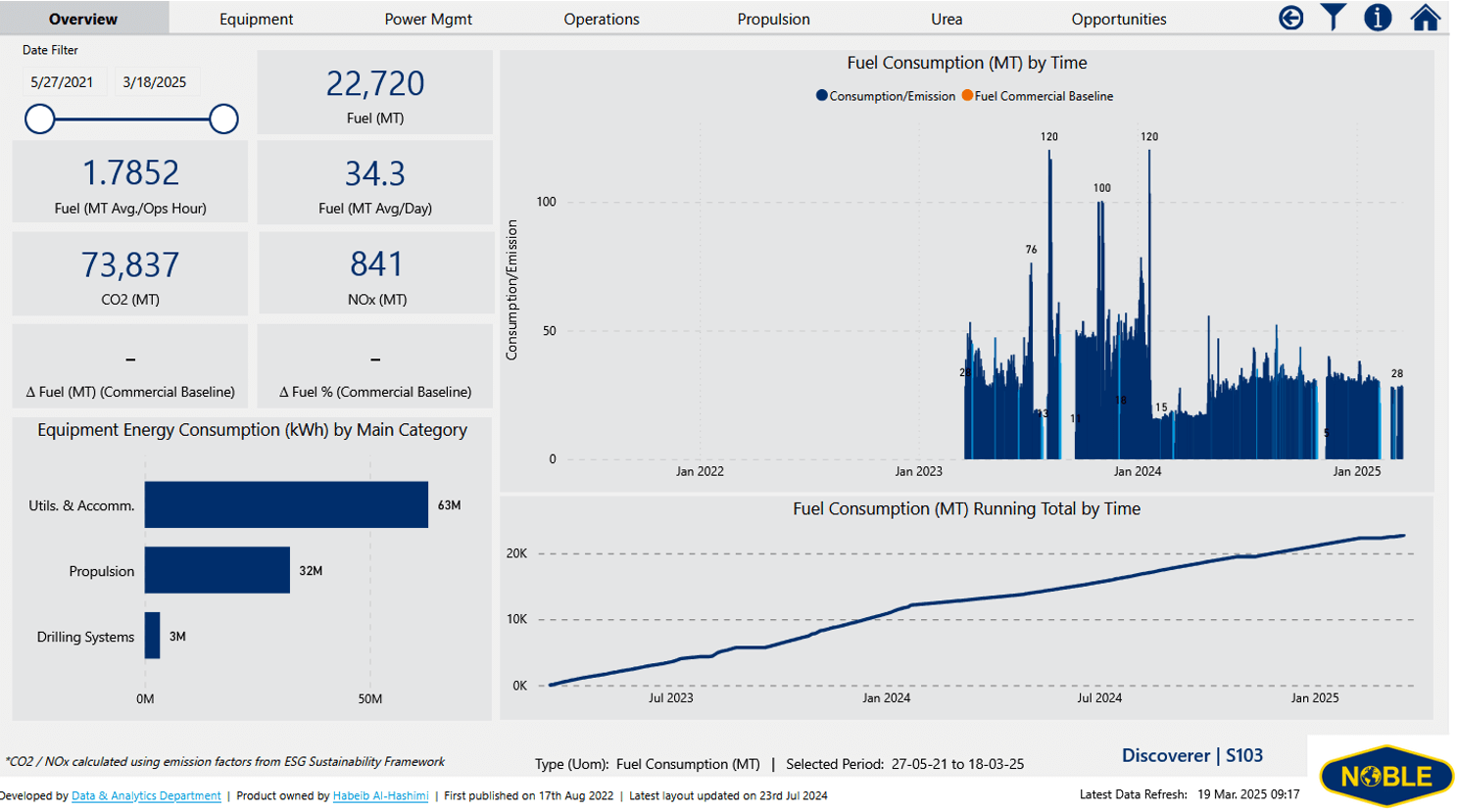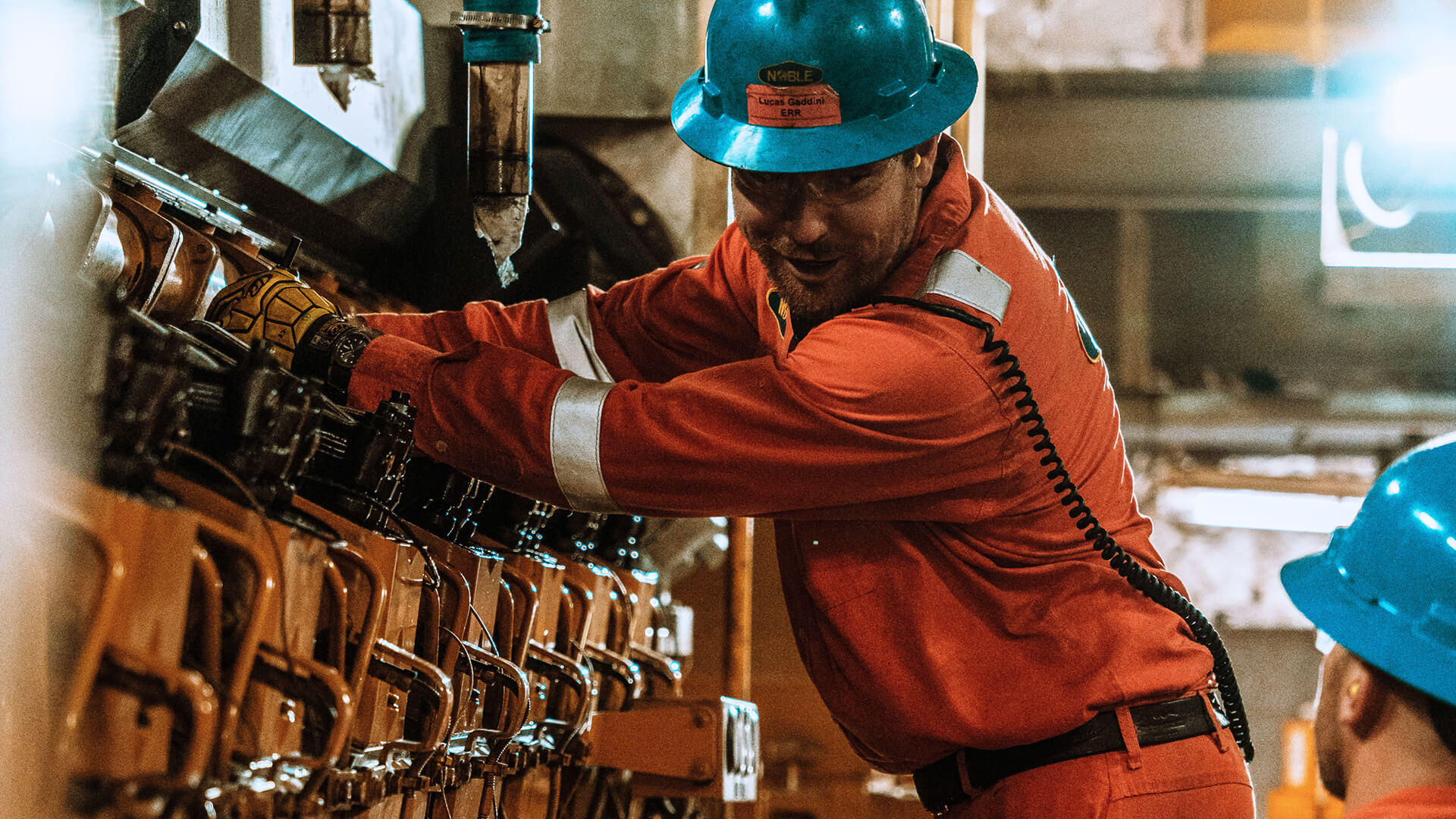
You can’t change what you don’t measure: Energy Efficiency Insights
Knowledge is power when it comes to reducing emissions on our fleet.
The offshore drilling industry has undergone transformative technological updates to make operations safer, more efficient, and better for the environment. However, we can’t improve what we can’t see, hence the need for automation in monitoring and data insights. For two years, Noble has actively used the Energy Efficiency Insights (EEI) monitoring program for data insights and to analyze energy usage and emissions during rig operations, but the desire to measure emissions really began in 2018. A motivation to expedite Noble’s monitoring efforts stemmed from our customers, regulators, and our own drive toward excellence.
Energy Efficiency Insights (EEI), is a software program that tracks fuel and energy consumption onboard our rigs and is used for analysis and calculation of GHG and nitrogen oxide (NOx) emissions. The data allows our engineers to gain insights into potential areas for energy optimizations and emission reductions. Having tangible EEI dashboards viewable both on- and offshore drives initiative planning on each rig for both the short-term and long-term. In addition to the already existing vast data measurements in our control systems, additional power meter sensors have been installed where needed to collect fuel and power consumption measurements in real time for relevant equipment and systems. Then the EEI software accesses the data stored in PowerBI, Noble’s onshore data cloud.

of Noble’s fleet currently has EEI active, with the program set to roll out to the remaining fleet later in 2025.
The use of EEI is important for all of our assets. Identification of efficiency improvements and opportunities are a vital part of our efforts to reach our sustainability strategy targets in 2030. The EEI applies to both our jackups and floaters, which both hold significant potential for optimization. Fuel and power consumption are different between the different rig types (jackup, drillship and semi-submersibles) and the EEI system helps identify both individual, but also cross fleet initiatives. Cross fleet initiatives include optimization of e.g. freshwater production, LED illumination, compressed air and ventilation fan upgrades. EEI verified a 10–12% reduction in auxiliary or basic power consumption by upgrading lighting to LED types. Additionally, on average, EEI verified an 80% (4/5) reduction in auxiliary power consumption when transitioning from conventional water makers to reverse osmosis units last year.

The EEI dashboard displays fuel and energy consumption, GHG and nitrogen oxide (NOX) emissions, and helps identify areas for energy optimizations and emission reductions.
10-12%
reduction in power consumption by upgrading lighting to LED types
80%
(4/5) reduction in energy consumption when transitioning from conventional water makers to reverse osmosis units last year.
In 2024, it was realized that the data needed to be more relevant and actionable. A new operations functionality was added to the EEI system, which allows users to break down power usage for various pieces of equipment by the type of activity that is occurring. Looking at usage by the hour for a specific operation is key because different operations consume different amounts of power, meaning energy efficiency and emissions reduction initiatives should be carefully tailored by need.
Currently, EEI is active on over half of Noble’s fleet, with the program rolling out to the remainder of the fleet later in 2025. Additionally, this year Noble will implement a new function within the EEI program to analyze power consumption during severe weather events. Understanding the impact of severe weather on energy consumption will strengthen our severe weather procedures and better prepare our operations teams for a variety of situations.
Noble is focusing on further refining the approach to reducing emissions fleetwide and stewarding the environment in which we operate well.
Noble 2024 Sustainability Report
For a deeper dive, explore the full PDF report with more extensive insights and details.
